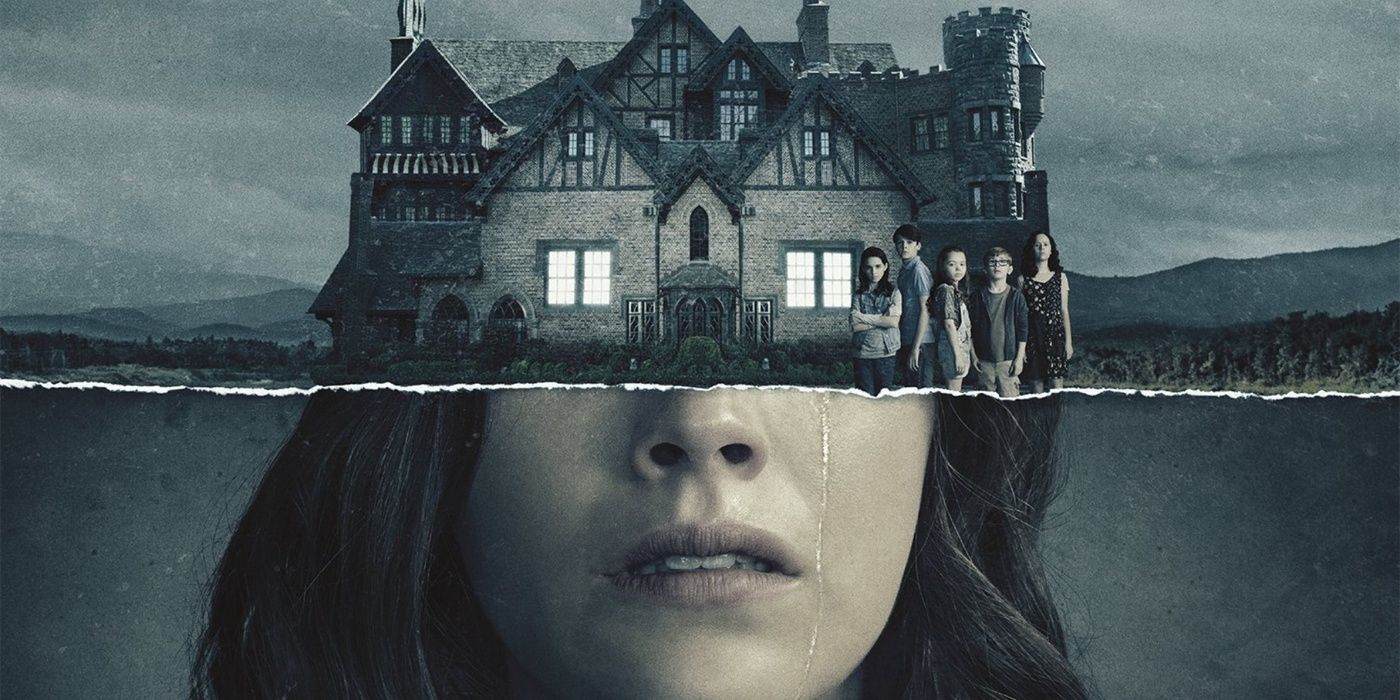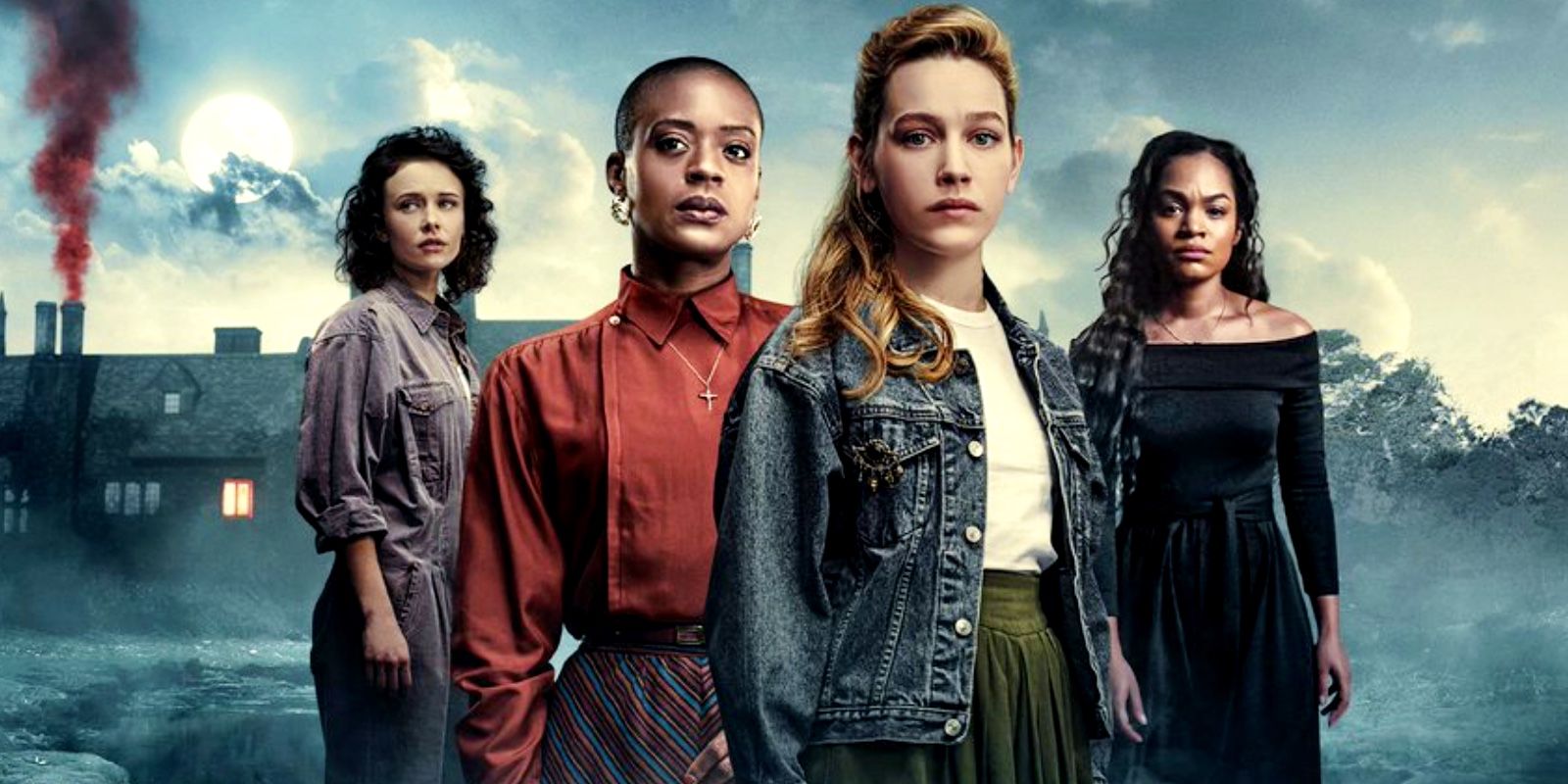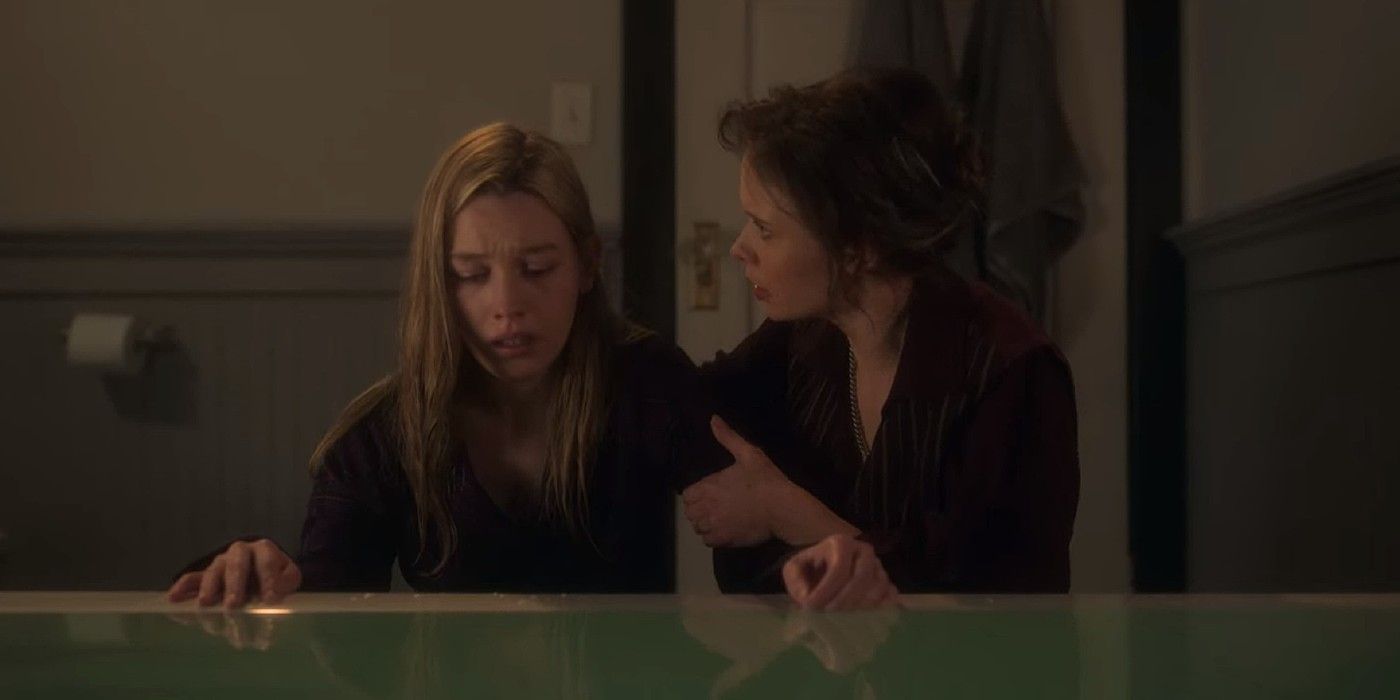Both of Mike Flanagan’s installments in his Haunting series became acclaimed, beloved works of supernatural and gothic horror, but The Haunting of Hill House delivered the superior story while The Haunting of Bly Manor executed a near-flawless ending.
It’s difficult to choose whether Hill House or Bly Manor is the better series. Both outings feature slow-burn, character driven elements of gothic fiction. The Haunting of Hill House released in 2018 and adapts one of the most famous tales of a haunted house of all time that stems from Shirley’s Jackson’s novel of the same name. Bly Manor primarily drew from Henry James’ The Turn of the Screw, but adapted other stories from the American author as well. Many returning cast members from Hill House took on new characters for Bly Manor, adopting the framework of other massively popular horror anthologies such as Ryan Murphy’s American Horror Story. However, what distinctly divides the two series is both their tone and deeper meaning of the ghosts that haunt their respective houses.
All in all, The Haunting of Hill House provides deeper, richer scares to audiences and a story that focuses on inherited trauma and familial disarray. The Crain siblings, who experienced terror and loss when they were young, all grew up with various hardships as adults, from Theo’s commitment and intimacy issues, Nell’s depression, and Luke’s drug addiction. It’s the perfect framework for a solid, cohesive story, but is edged out by Bly Manor‘s ending. The Haunting of Bly Manor isn’t a traditional ghost story, and focuses more on the romances between Peter and Rebecca, Owen and Hannah, and Dani and Jamie instead. It’s about loss and how the dead never truly stay gone, and the heartbreaking finale lingers with its audience long after the credits roll.
Haunting Of Hill House Was A Better Show (& Had A Better Story)

The Haunting of Hill House is the scarier of the two Flanagan series, and tells a very different – and better – overall story. The Crain siblings have become estranged to each other, at least in part, as adults after experiencing traumatizing hauntings in their childhood home, which led to the death of their mother, Olivia, who was sensitive to the supernatural influence and evil of the house. Unlike Bly Manor, Hill House is most certainly evil, and the ghosts are far different, too. Where the ghosts in Bly Manor are more familiar, Hill House‘s ghosts are hidden in the background rather than given fleshed-out stories, for the most part. The Bent-Neck Lady – who is later revealed to be Nell – is one of the most prominent ghosts. Though there’s still plenty of drama and romance for fans to sink their teeth into, two elements that are classic in gothic literature, it’s a different kind of ghost story.
The Crain siblings’ relationships provide a different kind of dynamic and interactions between the talented actors. Bly Manor fixates on romance, which is often cited as a weakness. Hill House doesn’t skimp on the scares, and even manages to land a few satisfying jump scares, but it’s the neat, tidy narrative and shifting perspective of each sibling, who feel fully fleshed out and three-dimensional, that adds to its strengths. Hill House juggles characters and perspectives more seamlessly, and nobody feels left behind or forgotten. Even Olivia, who really only exists as a ghost and in her children’s memories, feels like a complete character. Hill House also tackles a wider variety of subjects like depression, suicide, drug addiction, and mental illness. The juxtaposition of real-world issues with paranormal entities wraps the story of Hill House together in an enthralling mixture that is easier to follow, and never really lingers for too long where Bly Manor can feel slow at times.
Haunting Of Bly Manor Isn’t Really A Ghost Story

Bly Manor is more of a love story at its core. Throughout the course of the series, three major couples emerge, though one – Owen and Hannah – are doomed to be “what ifs”. It was clear that Hannah and Owen had reciprocal romantic feelings toward one another, with Owen declaring that he’d love to take Hannah away with him to start a life together in Paris after his mother’s passing. Hannah seemed like she did want to go with Owen, but since she died moments before Dani’s arrival at Bly after being pushed down a well by Miles – who was possessed by Peter Quint’s spirit at the time – she obviously couldn’t follow through with her desires. As such, Hannah and Owen became one of Bly’s doomed romances. Hannah repeatedly visited the day she met Owen in a loop because it was her happiest memory. She was finally set free by Dani’s sacrifice, but continued living through Owen’s memories of her.
Peter Quint and Rebecca Jessel fill the role of a second, equally doomed – albeit for different reasons – couple that haunt the halls of Bly Manor. Peter and Rebecca found themselves in a torrid love affair after she took the au pair job at Bly for Miles and Flora. Peter’s possessive streak, temper, and toxic behaviors found them struggling to sustain their whirlwind romance, and Peter’s manipulation of Rebecca continued even after his untimely death at the cold hands of the Lady in the Lake, Viola. Peter talked Rebecca into allowing him to possess her under the guise that it was a way for them to be together forever. Which it was, in the end — Peter forced Rebecca to walk into a lake while he was possessing her, and she subsequently drowned.
Dani and Jamie were a couple who developed more in the later stages of Bly Manor, with the “will they or won’t they” build-up taking near the series’ ending to play out in full. However, once the gardener and the au pair did pursue their romance, Dani sacrificed herself to save young Flora’s life — she allowed Viola to possess her, and that broke the gravity well that kept all the restless spirits of Bly Manor tethered to the place, setting them free. While a selfless, heroic act, it came with a steep price tag. Eventually, Viola would take her over completely, and there’d be nothing left of Dani. Therefore, after she and Jamie wed in Vermont, Dani returned to Bly Manor and willingly walked into the lake, ensuring that Viola could never cause any more harm and there would be no new spirits stuck at Bly. Jamie’s memories of Dani kept her going throughout the years, though it’s clear that her loss has consumed her — she waits to see or even join Dani again, even years later when she tells the story of Bly Manor and its tragic ghosts to an older Flora on her wedding day.
All of these elements are classic gothic romance elements, with the bittersweet moments adding an emotional weight to the terrors of the afterlife and the specters that represent those who were once so full of life and promise. Like Hannah, who longed to find peace and belonging with Owen or Jamie, who seemed strengthened and fully embodied by her love for Dani. Dani found that love was healing, and allowed her to close a painful chapter of her life and embrace her sexuality and identity without shame. Even Rebecca and Peter teach a valuable lesson about the dark side of love, and how it can be destructive instead of glorious, when applied to a toxic foundation. These aren’t the traditional elements of paranormal horror, which Hill House is, but ghost stories don’t always have to be scary — they can be tragic, emotionally harrowing, and still equally effective.
Haunting Of Bly Manor Has A Better Ending

Bly Manor‘s ending might have broken the hearts of audiences who wanted to see Dani and Jamie live out their days together, happily. However, Dani’s sacrifice needed to have consequences — for her to do something so selfless, so drastic needed a payoff that showed that these actions don’t always result in a happy ending. Sometimes, a person must do what is necessary despite the cost, even and especially if it’s a personal cost. In essence, Dani sacrificed her happy ending – which was deserved – for Flora’s future. Flora got to grow up and, as her memories of Bly Manor faded, got a new lease on life. She and Miles moved beyond the ghosts of their past, the deaths of their parents, and started over. Flora found love and even got married. Owen, Henry, and Jamie all got to attend her wedding and celebrate even though they seemingly carry the bittersweet memories of those who they all wished were with them to witness such a special moment.
For Owen, it was Hannah. For Jamie, it was Dani. For Henry – the children’s uncle – it was Charlotte, Flora and Miles mother with whom he had an affair that, ultimately, led to their trip to India, where both Charlotte and her husband, Dominic (Henry’s brother) perished. Even though the ending is heartbreaking, there’s a more uplifting conclusion in the sense that Jamie is visited by Dani’s ghost, who places her hand on the woman’s shoulder while she sleeps in a chair facing the door of her hotel room; the door is cracked open, as if in invitation. The ending of The Haunting of Bly Manor is ambiguous in that audiences don’t know whether Dani’s return means that she’s come back for Jamie permanently or whether the exchange is just a reminder that the dead are never truly gone. While it’s far from the dark implications of The Haunting of Hill House‘s ending with the Red Room, it’s a more complete conclusion that fully embraces the spirit of Flanagan’s second outing and gives the audience something to digest and cry over while the credits roll.




